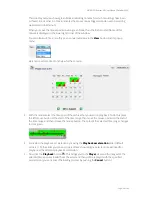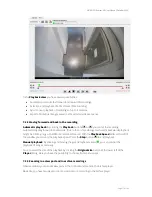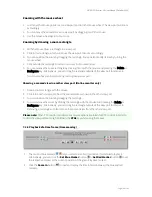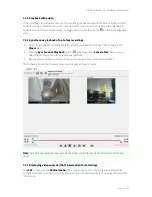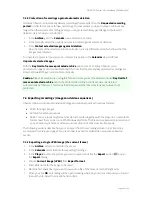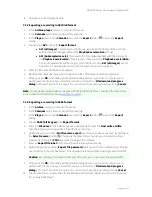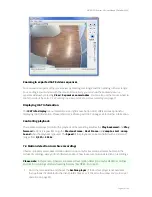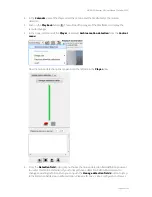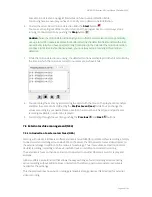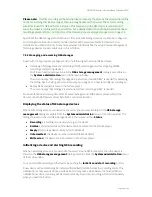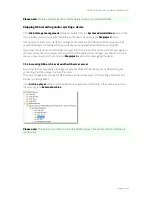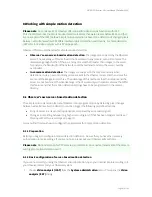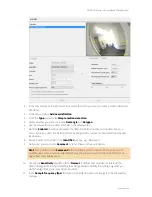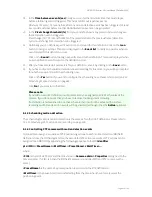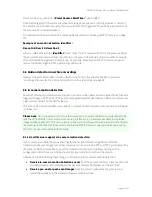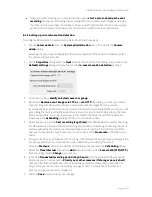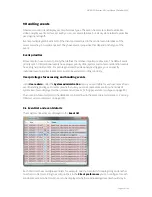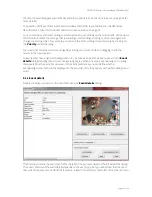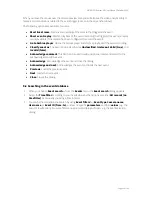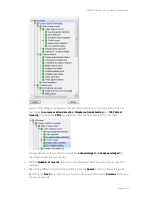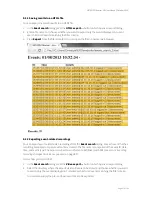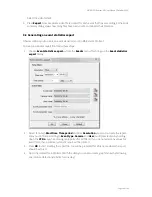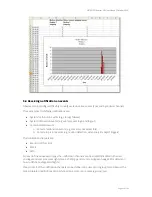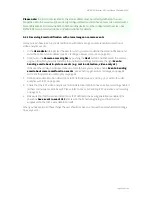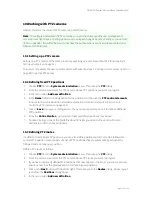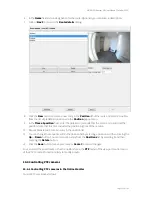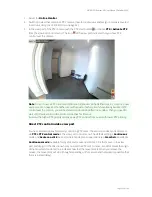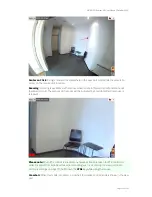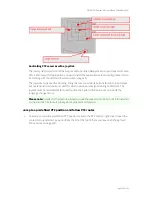
NETAVIS Observer 4.6 User Manual (October 2015)
Page 90 of 204
There can be any number of "
<PresetName>:<WaitTime>
" pairs added.
Further MD-triggered PTZ actions are blocked as long as a sequence is running. However, control of
PTZ camera can be taken manually, then the automatic MD-triggered PTZ control is suspended until
the manual PTZ control is released.
For information on how to setup PTZ preset positions refer to
10 Working with PTZ cameras
on page
101.
Example of an motion detection Identifier:
Door ptz:4:Door:10:HomePos:3
will on an MD event with the
Identifier
“Door” move the PTZ camera with ID 4 to the preset position
“Door”, wait 10 seconds and move the camera to the preset “HomePos” and wait another 3 seconds.
The overall positioning time therefore is app. 13 seconds. From then on the PTZ camera is open to
receive further MD-triggered PTZ positioning commands.
8.2 Motion detection in archive recordings
Observer supports server-based motion detection not only in live streams but also in archived
recordings. Please refer to
7.4 Motion detection in archive recordings
on page 82.
8.3 In-camera motion detection
Several IP cameras and video servers support in-camera motion detection and upload (push) of event-
triggered images via FTP or HTTP to a video management system like Observer. Observer implements
a general mechanism to handle this feature.
This section describes how Observer supports in-camera motion detection and also how to configure
it in Observer.
Please note
: Since the camera carries out the detection, the actual configuration and programming
must be done directly in the camera via the setup interface (e.g. parameters like detection settings,
image quality, speed, etc.). This can usually be done by connecting with a web browser to the camera
(by entering its IP address). Please refer to the latest
NETAVIS Observer Supported Video Sources
and
the camera’s user manual for further details.
8.3.1 How Observer supports in-camera motion detection
In the camera you define the various settings for the motion detection algorithm and for the
transmission of event images to the Observer server, which is done via FTP or HTTP ("push upload" by
the camera). Most cameras also support the transmission of pre- and post-event images. The
configuration of for these pre- and post-event images must also be done in the camera.
Observer is capable of doing these things in connection with in-camera motion detection:
Receive in-camera motion detection events
from the camera and store these events in the
standard Observer Event database (these events can also be displayed in the Event list).
Receive pre- and/or post-event images
from the camera (pushed by the camera) and
record these images in the standard Observer camera archive.

